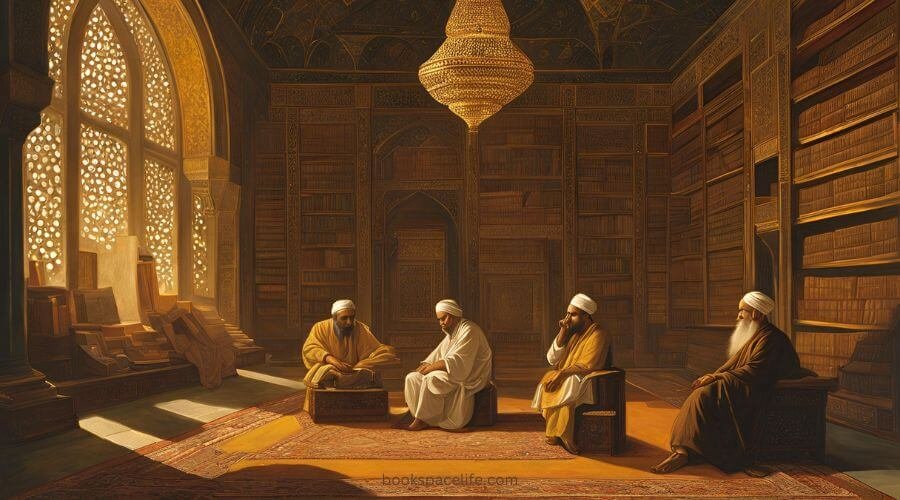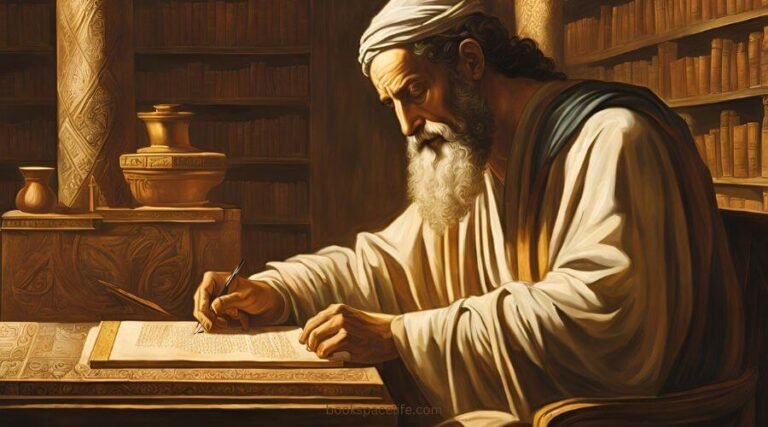Mulla Sadra
ulla Sadra : The Philosophical Genius of Safavid Persia
Mulla Sadra (Sadr al-Din Muhammad ibn Ibrahim al-Shirazi) stands as one of the most prominent and transformative philosophers of the early modern Islamic world.
Born in 1571 CE in Shiraz, a city in southern Iran, Mulla Sadra’s intellectual journey would have a lasting impact on Islamic philosophy, mysticism, and theology.
Mulla Sadra’s deep synthesis of Peripatetic (Aristotelian), Illuminationist, and Sufistic traditions of thought, combined with his own original insights, created a philosophical system that sought to reconcile reason with spirituality.
Today, Mulla Sadra is regarded as the founder of the Transcendent Theosophy (al-hikma al-muta’aliya), a distinctive school of thought that profoundly influenced later developments in both Islamic philosophy and theology.
Table of Contents
(1) Early Life and Education
Mulla Sadra was born in Shiraz, a city known for its intellectual vibrancy and historical significance as a cultural and academic center.
He came from a well-educated family, and his early education was steeped in traditional Islamic subjects, including theology (kalam), jurisprudence (fiqh), and Arabic literature.
His father, Ibrahim al-Shirazi, was a notable scholar, which likely provided Mulla Sadra with a strong intellectual foundation.
In his youth, Mulla Sadra traveled extensively, particularly to Isfahan, which was the center of intellectual activity during the reign of the Safavid dynasty.
There, he studied under some of the greatest scholars of the time, including Mir Damad, a leading philosopher and theologian, whose influence on Mulla Sadra’s thinking was profound.
This education marked a pivotal point in Mulla Sadra’s intellectual development, as he was introduced to advanced Peripatetic philosophy (derived from Aristotle), Illuminationism (ishraqi), and Sufism (Islamic mysticism), all of which would form the foundation for his own philosophical synthesis.
Mulla Sadra’s intellectual journey was marked by a continuous search for deeper truth, pushing the boundaries of philosophical traditions and integrating his personal mystical experiences into his philosophy.
His exposure to the philosophical texts of earlier Islamic thinkers, such as Avicenna (Ibn Sina), Al-Ghazali, and Suhrwardi, sparked his desire to reconcile reason and mysticism in a new way.
(2) Philosophical Foundations and Innovations
Mulla Sadra’s philosophy can be seen as a revolutionary development in the tradition of Islamic metaphysics.
His most significant contributions are found in his system of Transcendent Theosophy, which emphasizes the unity of existence (wujud), the dynamic nature of being, and the idea of evolutionary change in the soul and the cosmos.
Sadra synthesized various philosophical currents of his time, notably Aristotelian metaphysics, Avicennan logic, and Ibn Arabi’s Sufi metaphysics.
One of Mulla Sadra’s groundbreaking insights was his formulation of the concept of substantial motion (al-harakat al-jawhariyyah).
In contrast to the classical Aristotelian view, which considered motion to be an accidental property of objects, Sadra argued that motion is inherent to the very essence of substances.
This idea of substantial motion suggested that all matter is in constant transformation, evolving and changing in a manner that is tied to the nature of existence itself.
According to Sadra, this dynamic change is not merely an external process, but it reflects the essence of existence and its continuous movement toward perfection.
In this context, Mulla Sadra also offered a novel interpretation of metaphysical dualism.
While philosophers like Ibn Sina and Al-Farabi had distinguished between the material and spiritual realms, Sadra’s ontological monism (the belief that all of reality is ultimately one) posited that existence itself is a single, unified reality, with material and spiritual aspects being different manifestations of the same underlying truth.
He argued that the spiritual and material worlds are not separate, but rather, that the material world is a lower form of reality and spiritual reality is a higher, more refined aspect of existence.
Sadra also developed a sophisticated theory of the soul. He believed that the soul is not a static entity but rather a dynamic and evolving force.
Unlike the traditional Aristotelian conception of the soul as a static essence, Sadra proposed that the soul undergoes an evolutionary process, constantly moving toward perfection and union with the divine.
This idea was deeply influenced by Sufi mysticism, particularly the Ibn Arabi school of thought, which emphasized the soul’s journey toward God.
(3) Influence of Mysticism and Sufism
Mulla Sadra’s philosophy was deeply intertwined with his spiritual and mystical experiences.
He was heavily influenced by the mystical tradition of Sufism, which seeks a direct, experiential connection with the divine.
Sadra’s mystical inclinations led him to integrate elements of Sufi metaphysics into his philosophical system.
For instance, he adopted the Ibn Arabi-inspired notion of the unity of existence (wahdat al-wujud), which posits that all of creation is a manifestation of the divine, and that ultimate reality is a single, unified entity.
His engagement with Sufism also extended to his views on spiritual progress.
Sadra believed that philosophical knowledge and spiritual enlightenment were intimately connected.
For Sadra, true knowledge of the universe could not be attained without a corresponding spiritual awakening.
This belief reflected the deep integration of rationalism and mysticism in his philosophy, where intellectual pursuit and spiritual cultivation were seen as complementary paths to achieving a deeper understanding of reality.
(4) Major Works
Mulla Sadra wrote extensively, producing a number of influential works that have shaped Islamic philosophy.
Among his most significant works is “al-Hikma al-Muta’aliya fi-l-Asfar al-Aqliyya al-Arba’a” (The Transcendent Theosophy of the Four Intellectual Journeys), which presents his metaphysical and epistemological ideas in a systematic way.
This work deals with the nature of existence, the cosmology, the human soul, and the process of spiritual ascent.
Another important work of Sadra is “al-Shawahid al-Rububiyya” (The Witnesses to Divine Lordship), in which he explores the nature of God and the relationship between the Creator and the created world.
In this work, Sadra emphasizes that the divine reality is beyond human comprehension, but can be indirectly known through the contemplation of the natural world.
His “al-Mabda’ wa-l-Ma’ad” (The Beginning and the End) is also a key text that addresses the origins of the universe and the final return to the divine source.
It reflects his belief in the cyclical nature of existence, where the soul ascends towards God and then returns to Him in an eternal process of spiritual purification.
(5) Influence and Legacy
Mulla Sadra’s influence on Islamic philosophy, theology, and mysticism is profound and enduring.
His intellectual synthesis of Peripatetic philosophy, Illuminationism, and Sufism provided a philosophical framework that bridged the gap between reason and spirituality, logic and mysticism.
His works became a cornerstone for later philosophers and scholars within the Islamic world, particularly in Persia.
In the centuries after his death, Mulla Sadra’s philosophy played a central role in shaping the intellectual developments of Safavid Persia, particularly during the Qajar dynasty.
His ideas were studied and developed by later thinkers, including Mirza Muhammad Taqi and Shah Wali Allah, who contributed to the development of Islamic modernism.
Beyond the Islamic world, Mulla Sadra’s ideas also had an impact on Western philosophy.
His ideas on the nature of being, substantial motion, and the unity of existence found resonance with thinkers in the West, particularly in the fields of ontology and metaphysics.
(6) Conclusion
Mulla Sadra stands as a towering figure in the history of Islamic philosophy and mysticism.
His philosophical system, which synthesized different intellectual traditions, was a major turning point in Islamic thought.
His legacy continues to inspire scholars, mystics, and philosophers who seek to reconcile reason with spirituality and explore the depths of existence.
Mulla Sadra’s intellectual journey, marked by his profound insights into the nature of reality and the soul, makes him a key figure in the philosophical landscape of the Islamic Golden Age and a continuing influence in the world of contemporary philosophy.








